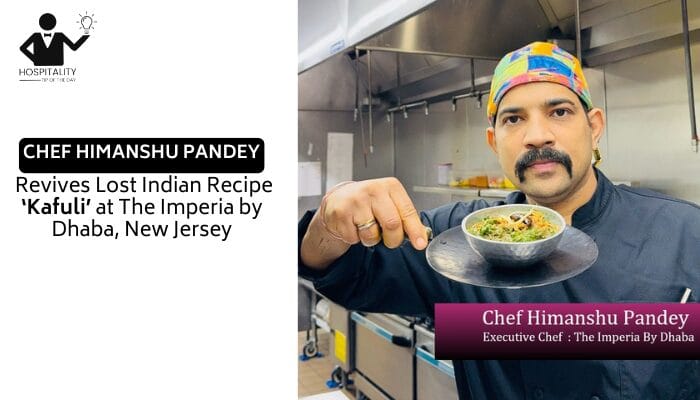
In the world of fine dining and culinary reinvention, where fusion dominates and plating trends evolve by the minute, Chef Himanshu Pandey stands as a grounded, yet progressive voice — one who champions the soulful stories of Indian cuisine. Currently serving as the Executive Chef at The Imperia by Dhaba, New Jersey, Chef Himanshu doesn’t just cook food — he revives forgotten recipes, reimagines classics, and honors the culture from which they came.
Among his many culinary missions, one shines with quiet brilliance — bringing lost recipes of India back to the plate, one region at a time.
Kafuli (काफुली) – A Nutrient-Rich Spinach Stew from Uttarakhand
One such treasure from the hills of Uttarakhand is Kafuli — a humble, iron-rich stew made from seasonal greens like spinach and fenugreek. Often overlooked in mainstream cuisine, Kafuli is now finding its place on global menus, thanks to chefs like Himanshu who understand its value not just in nutrition, but in heritage.
“Kafuli is the heartbeat of every Kumaoni kitchen,” Chef Himanshu shares. “It’s not fancy—but it’s pure, honest, and medicinal, just like the food from our hills is meant to be.”
He vividly recalls the days when his mother would prepare Kafuli in a wood-fired kitchen, whisking in curd and rice flour until it reached a silky, green consistency. That memory, once a part of his childhood in the hills, is now reimagined in professional kitchen thousands of miles away — served to guests in the U.S., plated with pride and purpose.
The Recipe: Bringing the Hills to the World
Ingredients:
| Ingredient | Quantity |
| Spinach (Palak), chopped | 2 cups |
| Fenugreek leaves (Methi), optional | ½ cup |
| Green chilies | 2 |
| Ginger | 1-inch piece |
| Garlic cloves | 4 |
| Curd (beaten) | ½ cup |
| Rice flour | 2 tsp |
| Mustard oil | 1 tbsp |
| Cumin seeds | 1 tsp |
| Asafoetida (Hing) | A pinch |
| Salt | To taste |
| Water | As required |
Method:
- Blanch the Greens: Boil spinach and methi in water until soft. Strain and let them cool.
- Blend to Paste: Grind the greens with green chilies, ginger, and garlic to form a smooth paste.
- Temper: Heat mustard oil in an iron kadhai. Add cumin seeds and a pinch of hing.
- Cook the Paste: Pour in the green mixture and simmer for 5–7 minutes on low heat.
- Thicken: Mix rice flour in ¼ cup water and add to the mixture. Stir well.
- Add Curd: Slowly stir in beaten curd, making sure it doesn’t curdle.
- Simmer: Let the kafuli cook on low flame for 5–6 minutes until thick and creamy. Add salt to taste.
- Finish: Top with a spoon of mustard oil or ghee for richness.
Serving Suggestion:
- Serve hot with steamed rice, mandua (ragi) roti, or even phulka.
- Garnish with a drizzle of homemade ghee and a dash of roasted cumin powder.
- Traditionally paired with mooli ka thechwani and bhaat (plain rice) for a complete pahadi meal.
Image Suggestion for Visuals:
An overhead shot of a rustic iron kadhai with deep green kafuli gently simmering. A traditional brass thali nearby with kafuli, steamed rice, mooli thechwani, and a spoon of ghee glistening on top. The background features a wooden table, a strip of pahadi handwoven fabric, and scattered pink Himalayan salt crystals — creating a sense of place and purity.
Reviving Recipes, Reconnecting Cultures
Through Kafuli and many such regional gems, Chef Himanshu Pandey is doing more than cooking — he’s preserving culture, reconnecting diaspora with their roots, and introducing global audiences to the soulful flavors of Indian kitchens that once only lived in grandmothers’ recipes.
“It’s not about elevating Indian food—it’s about respecting it,” he says.
“If I can bring back even one lost recipe and give it the respect it deserves, I’ve done my job as a chef.”








